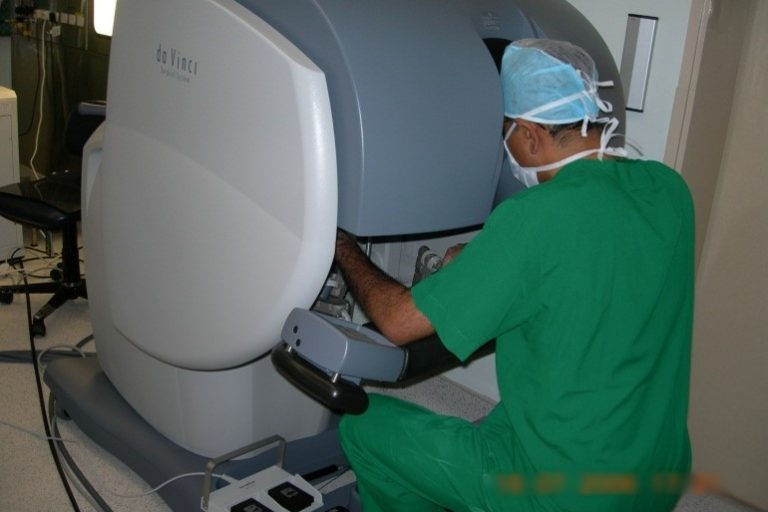Robotics in Neurosurgery
- May 13
- 3 min read
Updated: May 21
Dr. Prem Pillay, Singapore
Senior Consultant Neurosurgeon with super specialty training in Neurosurgical Oncology
(Fellow at MD Anderson Cancer Center and Hospital, U of Texas, USA)

Historical Origins
Robotics in neurosurgery represents a groundbreaking technological advancement that began in 1985, marking the first practical application of robotic systems in surgical procedures[1]. The Zeiss MKM Robotic Microscope and the Surgiscope in the early 2000-2010 period were also groundbreaking. The field has since evolved dramatically, driven by the need for increased precision, minimally invasive techniques, and enhanced surgical capabilities.
Types of Robotic Systems
Surgical Control Approaches
Neurosurgical robotic systems can be categorised into three primary control methods:
Surgeon Supervised Systems
Preplanned surgical procedures
Neurosurgeon plots robotic arm movements beforehand
Robot performs predetermined movements
NeuroSurgeon provides direct oversight[1]
Telesurgical Robots
NeuroSurgeon controls surgical movements remotely
Real-time control from a separate console
Includes haptic feedback and live video transmission
Enables surgery from outside the operating room[1]
Shared Control System
Collaborative interaction between robot and Neurosurgeon
NeuroSurgeon maintains primary movement control
Robot provides stabilizing forces[1]
Notable Robotic Neurosurgery Platforms and Systems
Advanced Robotic Systems include:
NeuroArm: First MRI-compatible neurosurgical robot (launched 2008)
ROSA ONE Brain: Provides minimally invasive brain procedures
Renaissance Robotic System: Offers high dexterity for deep brain procedures
CyberKnife: Pioneering radiosurgery platform[1][2][3]
NDR Spine Robotics for Discoplasty and other Spine procedures
Robotic Radiosurgery for Brain and Spine Tumors and Cancers
Da Vinici Robotics for selective Brain and Spine Surgery
Clinical Applications and Primary Neurosurgical Uses
Robotic systems excel in several critical neurosurgical domains:
Precise Anatomical Localation
Stabilizing Surgical Instruments
Deep Brain Target Access
Spinal Pedicle Screw Placement
Stereotactic Procedures
Minimally Invasive Brain Interventions[3][4]
Specific Procedural Applications
Epilepsy surgery
Deep brain stimulation
Stereotactic biopsies
Electrode placement
Tumor removal
Laser ablation procedures[4]
Technological Advantages
Key Benefits
Unprecedented Precision: Sub-millimeter accuracy
Minimally Invasive Techniques
Reduced Surgical Trauma
Shorter Procedure Times
Lower Infection Risks
Enhanced Surgical Planning[2][4]
Limitations and Ethical Considerations
Technical Challenges
Potential view obstruction during surgery
Limited tactile dexterity
Image acquisition distortions
Mechanical design constraints[5]
Ethical Concerns
Potential reduction in surgeon’s manual skills
High technological costs
Unequal global access to advanced technology
Risk of over-reliance on robotic systems[5]
Future Perspectives and Emerging Trends
Machine Learning Integration
Enhanced Autonomous Capabilities
Improved Human-Robot Collaboration
Expanded Procedural Applications
More Sophisticated Sensory Feedback[6]
Future Trends in Robotics in Neurosurgery
Neurosurgical robotics is expected to become increasingly sophisticated, with potential multi-robot systems collaborating during complex procedures. The future likely involves more nuanced, adaptive robotic platforms that can handle intricate neurological interventions[6]. Dr Prem Pillay believes that future neurosurgical teams will include humanoid robotic assistants ( AI embodied) working with human Neurosurgeons using smart tools to remove brain tumors and brain cancers; correct spinal problems, and using finer tools and devices to replace diseased, injured or missing parts of the nervous system (Brain and Spinal Cord).
Robotic neurosurgery represents a transformative technological frontier, balancing remarkable precision with ongoing technological challenges. As research continues, these systems promise to revolutionize neurological interventions, offering unprecedented surgical capabilities while maintaining critical human expertise.



